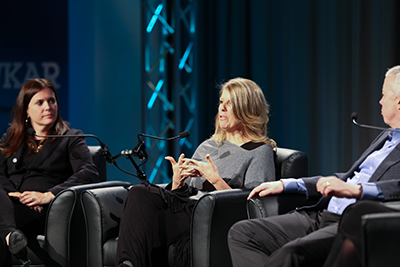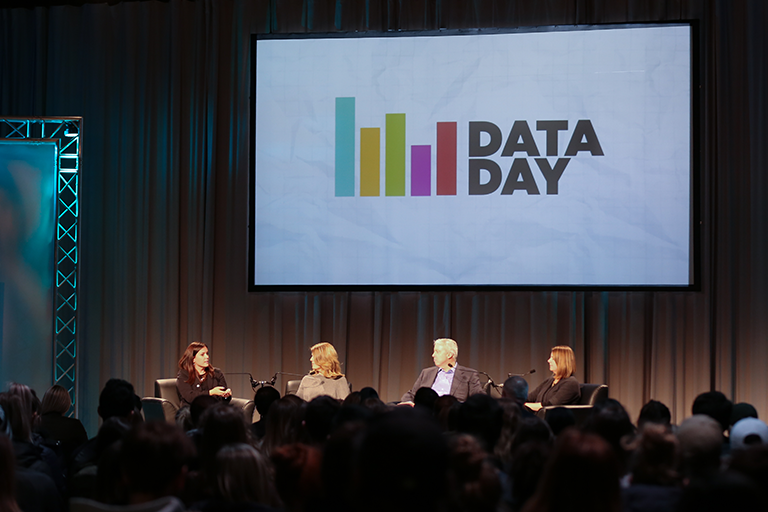Big data is more than a trend; it’s the future. On February 16, the College of Communication Arts and Sciences held its first annual Data Day event for MSU students.
Aiming to help students understand how to prepare for a career in digital and media analytics, ComArtSci brought back a panel of talented MSU alumni. Considered leaders in big data and analytics, these experts started the day with focused sessions on how data impacts our lives and everyday business and concluded with a large panel discussion.
Guest Alumni Talks Spark Discussion
Students got the chance to learn about careers in analytics through smaller breakout groups led by Heather Fitzgerald, Jon Pepper, Anne Marie Schiller and Denver Smith. Each guest speaker explained how they started working with data, followed by a discussion of their career path.
“I originally wanted nothing to do with math,” said Fitzgerald, senior vice president of Just Media. “Statistics was even my worst class, grade-wise, but when I started my internship I realized I was drawn to data and discovering the story behind it.”
The demand for employees who can utilize data to support marketing decisions is rapidly increasing in the workplace. Business decisions are increasingly data-driven. Data analytics also support the majority of marketing decisions and advertising campaigns, especially when it comes to content.
“The goal is to create content that’s thumb-stopping,” said Denver Smith, marketing analyst at State Farm, as he explains the importance of collecting data on engagement for social media advertisements.
The Impact of Big Data on Advertisement
Everything we do is touched by data, making it fundamental to business. However, it can raise ethical and social questions for how big data is used. A group of panelists answered these tough questions and gave a deeper insight into the world of data.
One of the main points discussed in this panel was the ability of big data to measure smaller actions and behaviors in specific locations for individual users. Schiller used her work with McDonald’s as an example.

“The amount of data we can splice and dice is so much more specific than five years ago,” said Schiller, global chief of RAPP Collins Worldwide. “For example, we can tell what kind of McDonald’s customer you’ll be at different times of the day through data collected from the McDonald’s app.”
The results of big data are instantaneous. In the real-time, the automation of big data can be used to measure the effectiveness of marketing, which can help decide on the path of most efficiency.
“We have to ask ourselves what does efficiency mean?” said Fitzgerald. “Not to reduce staff, but to free up time and give value-added activities and give value-added activities.”
With data at the forefront of innovation and technology, it can seem as though we’ve harnessed much of its potential. However, the future of big data is still being shaped and understood.
“The promise of data isn’t even close to being achieved because we’re still getting our hands around how to put all this stuff together in the right way,” said Pepper, partner at Indelible.
With talented alumni in the field and big data research currently underway at MSU, it’s clear that Spartans will continue affecting the prospects of data analytics.
By Sierra Richards
